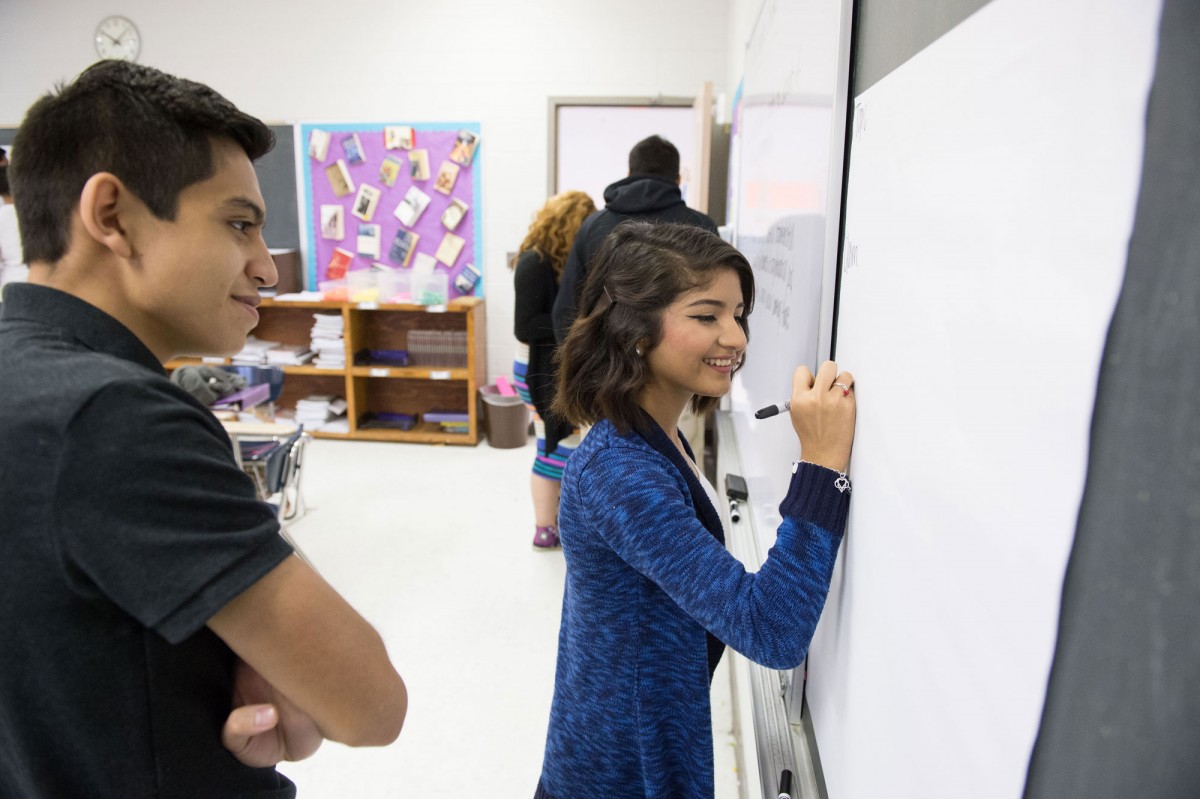How to Help Students Own the Transition Back to School
July 26, 2021

Ideas for teachers and leaders to support a strong start in 2021-22
By: NIET CEO Dr. Candice McQueen
As students transition back to school this year, it is imperative that we don't create an environment where everything is business as usual. Students will need time to process the past year – whatever that looked like – so they can fully adjust and thrive as they begin a fresh school year. Here are three ways to make this a priority:
1. Ask students what they need.
One of the easiest and most overlooked ways to engage on any critical topic and gauge needs is to ask, "What do you think you need?" After this past year, we should let students describe what they lost – or maybe gained – and how that has impacted them. This includes asking about what academic, social, and emotional support they may want going forward.
For younger students, this may look like asking them to share what they felt they learned or what they wished they had been able to do. For older students, this processing can happen in small groups by providing guiding questions to elevate what may be on their minds. Examples include:
- What was something that you enjoyed about last year?
- What was something you missed out on last year that we should aim to do in the first month of school?
- What is one way that your teacher can support your learning?
- What is one way that your peers can support your learning?
The answers to these questions and prompts can then be integrated into how the teacher speaks about goals and focus areas for the year. Pay special attention to responses from students who were fully remote last year, as new research suggests students who attended school remotely reported lower levels of social, emotional, and academic well-being as compared to peers who attended in person and may need additional support. Consider being extra attentive to how these students are grouped with peers and incorporating additional relationship-building activities to give these students a better chance of connecting with the class.
2. Allow students to set and track their own learning goals for the year.
Another way to help students own the transition back to school is to equip students to set their own goals. This could mean allowing students to co-construct success criteria at the beginning of each unit or lesson so that they understand and help create their academic expectations. Also consider data notebooks for students, where they have a place to regularly track their progress.
Student goal-setting can go beyond academics, though. Think about how students can set goals for classroom culture. Ask them what they want their classroom environment to look and feel like. Some guiding questions to get the conversation flowing include:
- What do you want our classroom relationships and culture to look like a month from now?
- How do you think we will work together best as a class?
- What are the top three priorities for your ideal classroom environment? (Consider providing a list that they could rank from most important to least important. Examples include "I want to feel safe asking questions of my teacher and peers," "I want to know each of my classmates by name and have the chance to collaborate with everyone," "I want to be able to share my work and ideas without being ridiculed or risking embarrassment," or "I want to have freedom to share feedback with my peers.")
Providing students with the agency to set goals for both their own academic needs and the class as a whole allows them to fully own their learning experience.
3. Model and celebrate resilience as we move forward.
Finally, students need to see and hear models of how to regroup when things are out of their control. Teachers, staff, other adults, and even other students can be powerful examples of constructive coping when things don't go as planned. Teachers and leaders should intentionally collect these models of resilience and share them as the year begins.
Consider simply asking, "What are you proud of from the last year?" or "What is something difficult that you overcame during the pandemic?" Highlight those who creatively dealt with more restrictive quarantine or technology limitations, as well as those who experienced illness personally or within their family. These stories will likely be easy to collect as each and every student and staff member went through challenges over the last two years. Just gathering them and sharing them with the school community can encourage both staff and students to channel their own resilience moving forward in a brand new year.
Students need to feel empowered as they transition back to school in person, particularly those students who spent the majority of the last two years learning remotely. Granting them the power to express their needs and set goals, as well as reflect on their own resilience, will foster student ownership and set them up for a fresh start in 2021-22.